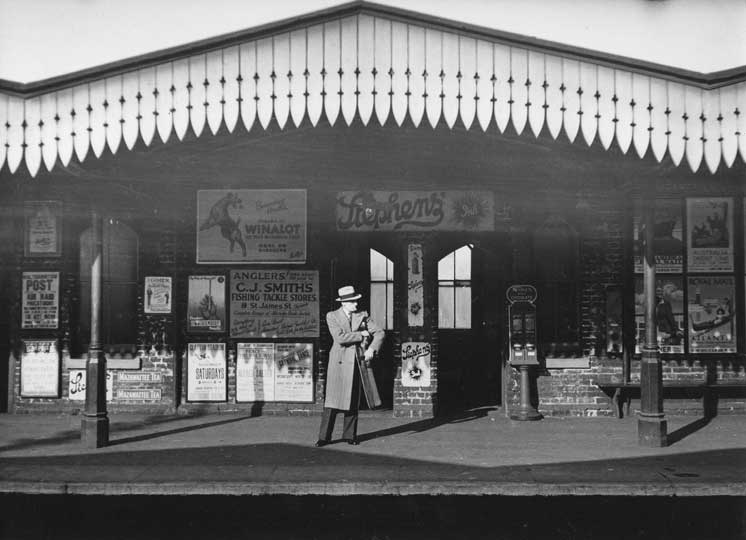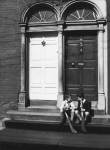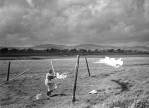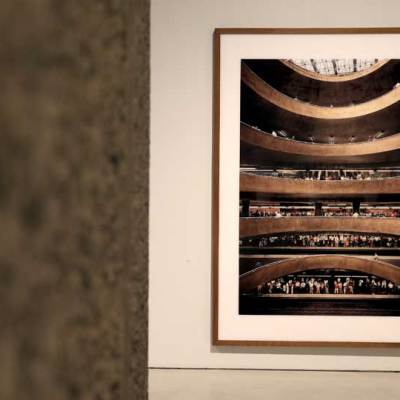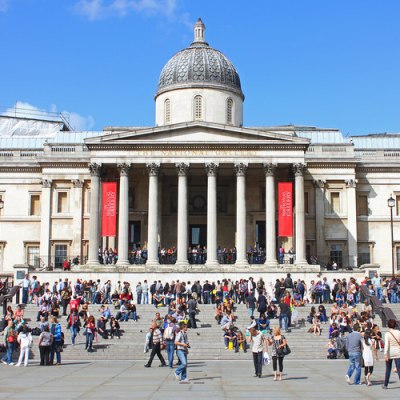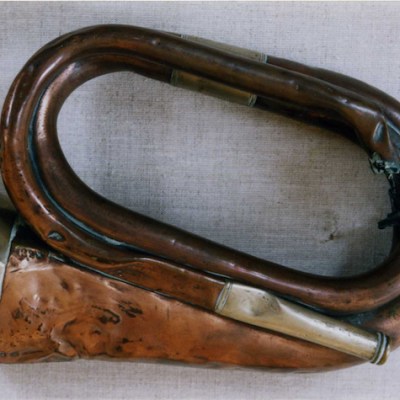The Royal Institute of British Architects’ exhibition, ‘Ordinary Beauty: The Photography of Edwin Smith’ (until 6 December), is the second to occupy the recently created Architecture Gallery at their 66 Portland Place headquarters. Not since the closing of the Heinz Gallery at the old home of the RIBA’s drawings collection at 21 Portman Square has the institution had its own museum standard gallery.
There is, of course, the slightly drab and unexciting, not to mention impossible to find, Room 128 at the V&A, established as part of the V&A/RIBA partnership which saw the latter’s drawings collection housed at the former. But the new gallery at 66 Portland Square is something different: the home for a new programme of temporary exhibitions derived from the RIBA’s internationally significant collection and aimed, it seems, largely at a public audience. Rather than explicitly ‘showcasing’ the collection, the exhibition programme plans to use it more as a kind of unparalleled resource or archive. This is exactly what the RIBA have done with the present retrospective of the British photographer Edwin Smith (1912–71; they hold the photographer’s archive of 60,000 negatives and 20,000 prints) and look like continuing next autumn with an exhibition on Palladio and Palladianism – an area where the RIBA drawings collection is wonderfully rich.
But with the Design Museum soon moving to bigger premises, the V&A now taking contemporary architecture seriously, and the success of the Royal Academy’s recent architecture shows, one has to wonder whether there is much need for the RIBA to put on its own exhibitions in an already crowded London market. The first exhibition in the new space, ‘The Brits Who Built the Modern World’, suggested a great epic of show, but the reality exposed the pokiness of the RIBA’s new gallery, compounded by curation that recapitulated many of the clichés of architecture exhibitions – models and photographs standing in for buildings and the sense that what we really have is a book on the wall. Might it be better off making its collection more easily (and cheaply) available for these other institutions to borrow from? In some ways this question gets to the longstanding conundrum at the heart of the RIBA: whether it is for architecture or for architects. Does it exist to serve the professional interests of architects or the broader objectives of the promotion of architecture?
The RIBA would no doubt say they do both, with their exhibition programme clear evidence of the latter. When I visited ‘Ordinary Beauty’ on the afternoon of its first Saturday, there was a trickle of visitors. This was fortunate as the small galleries have been packed with more than 100 photographs, giving a full sweep of Smith’s oeuvre. Partly biographical, partly thematic, the exhibition begins with Smith’s first forays into photography before the Second World War. Several quotations are emblazoned on the walls at various stages of the exhibition, though the first, from Smith himself, is the most significant and also the most poetic: ‘I am an architect by training, a painter by inclination, and a photographer by necessity’.
St Lawrence, Didmarton, Gloucestershire (1962), Edwin Smith © the artist, RIBA Library Photographs Collection

The exhibition really gets going when we get to the architectural work and photography of place that Smith became famous for in the 1950s and 1960s. Here, we see some wonderfully evocative images of buildings, often run-down and dilapidated, but full of resonant energy. Particularly memorable to my eyes are photographs depicting the rebuilding of Temple Church after Blitz damage (1953) and the decaying, soon to be lost Hafod House near Ceredigion in west Wales (1950). There is a haunting feel to many of the photographs; people are almost always absent from the scenes, but a human presence is seemingly inescapable. In John Betjeman’s words, Smith could ‘find a significant detail in a church – an oil lamp, a bell rope, or a harmonium which could conjure up a whole parish of people’. The sense, though, is that those people are not coming back, that even when the photographs were taken, these were scenes of a world that was already lost. As Smith’s partner, Olive Cook, remarked, ‘In a shorter time than we care to think these photographs, which now portray a living present, will merely record a vanished past’.
The exhibition’s curators make an interesting point in comparing Smith’s photographs to contemporary Ealing Comedies, Benjamin Britten’s Peter Grimes and the writings of Betjeman and J.B. Priestley, in how they connote a particular kind of Britishness, one which is eccentric and often nostalgic – yet above all conservative with a small ‘c’. This final aspect is not mentioned in the exhibition at all – but it is the defining characteristic of the view of Smith’s photography that the exhibition presents. I soon found myself going around trying to find the most modern building depicted. By my reckoning it is the Forth Rail Bridge, opened in 1890. We see nothing of the extraordinary changes being wrought throughout Britain during the period Smith was photographing, and are left, instead, with ‘a series of frozen dreams’, as Smith’s photography was described in The Guardian in 1956.
St Columba’s Wells, Londonderry (Derry) , N Ireland (1965), Edwin Smith © the artist, RIBA Library Photographs Collection

In the section on Smith’s landscapes, the curators draw a comparison to Constable, and one might also compare them to Turner in the way the Smith was able capture the changing effects of light. Smith’s was a painter’s eye, but one which saw the world refracted through the medium of photography. In this he was like the earlier British photographer Frederick H. Evans (1853–1943), whom the exhibition describes as Smith’s ‘spiritual predecessor’; indeed, Smith even went as far to produce his own version of Evans’ famous ‘Sea of Steps’ at Wells Cathedral. Like Evans, Smith used his camera not to depict objective reality, but to convey emotion. His photographs evoke feelings of nostalgia, longing and for the charm of the picturesque, whose hold on us only seems to tighten amid ever increasing social, economic and environmental changes.
Looking at Smith’s photographs today, it is hard not to be seduced by his views of a world, which, like a fleeting ghost, disappeared almost as soon as he clicked his camera’s button. Visiting this exhibition is unlikely to change your views about architecture. But go, to marvel at Smith’s eye and his talent for creating images that offer succour to the soul.
‘Ordinary Beauty: The Photography of Edwin Smith’ is at RIBA until 6 December.
